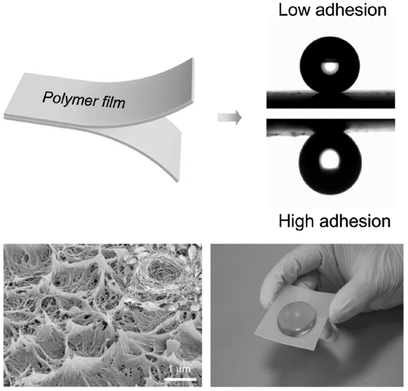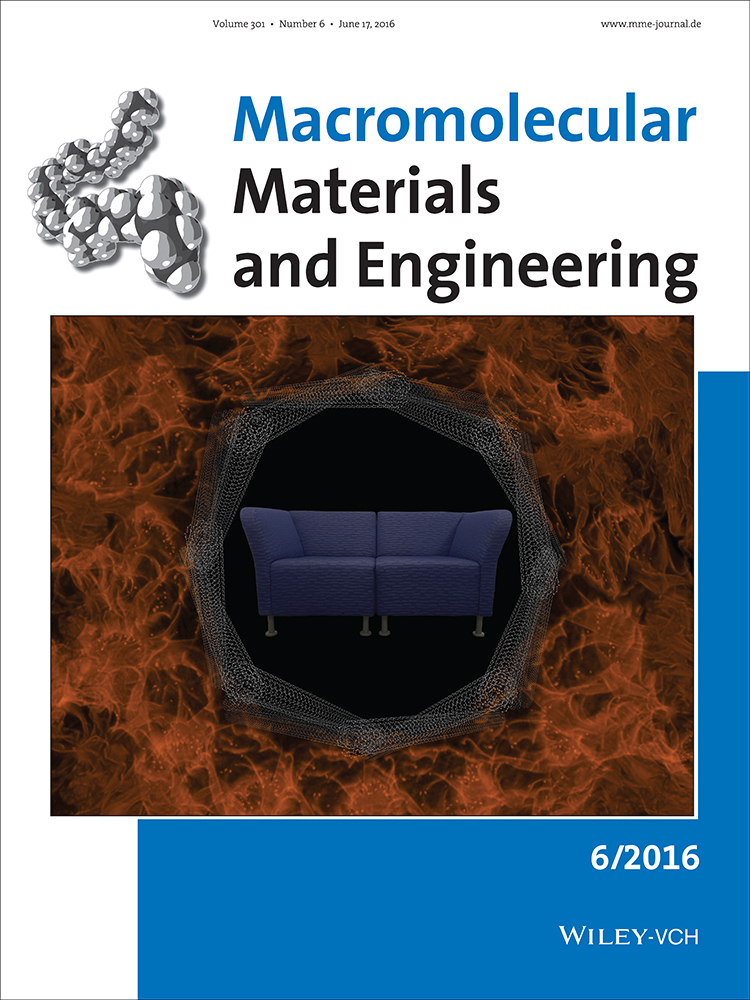Polymer Self-Etching for Superhydrophobicity through a Green Hot-Pressing-Exfoliation Process: Low and High Adhesion
Abstract
A green polymer self-etching strategy for fabricating superhydrophobic surfaces exhibiting low and high adhesion is proposed by using hot-pressing and exfoliation on a pair of low density polyethylene (LDPE) films. It is demonstrated that the hot-pressing temperature has significant influence on the surface morphology of LDPE. Effective hot-pressing temperature for low-adhesive superhydrophobicity ranges from 109 to 161 °C. Bird's-nest like micro-/nanostructures are observed in the unzipped LDPE surfaces compressed at 109 °C, which shows excellent water repellency. LDPE surface compressed at 108 °C demonstrates superhydrophobicity with high adhesion, i.e., a water droplet cannot roll off even when the surface is turned upside down. Furthermore, superhydrophobic vessels are processed and applied to transport water and microdroplets of water losslessly.





